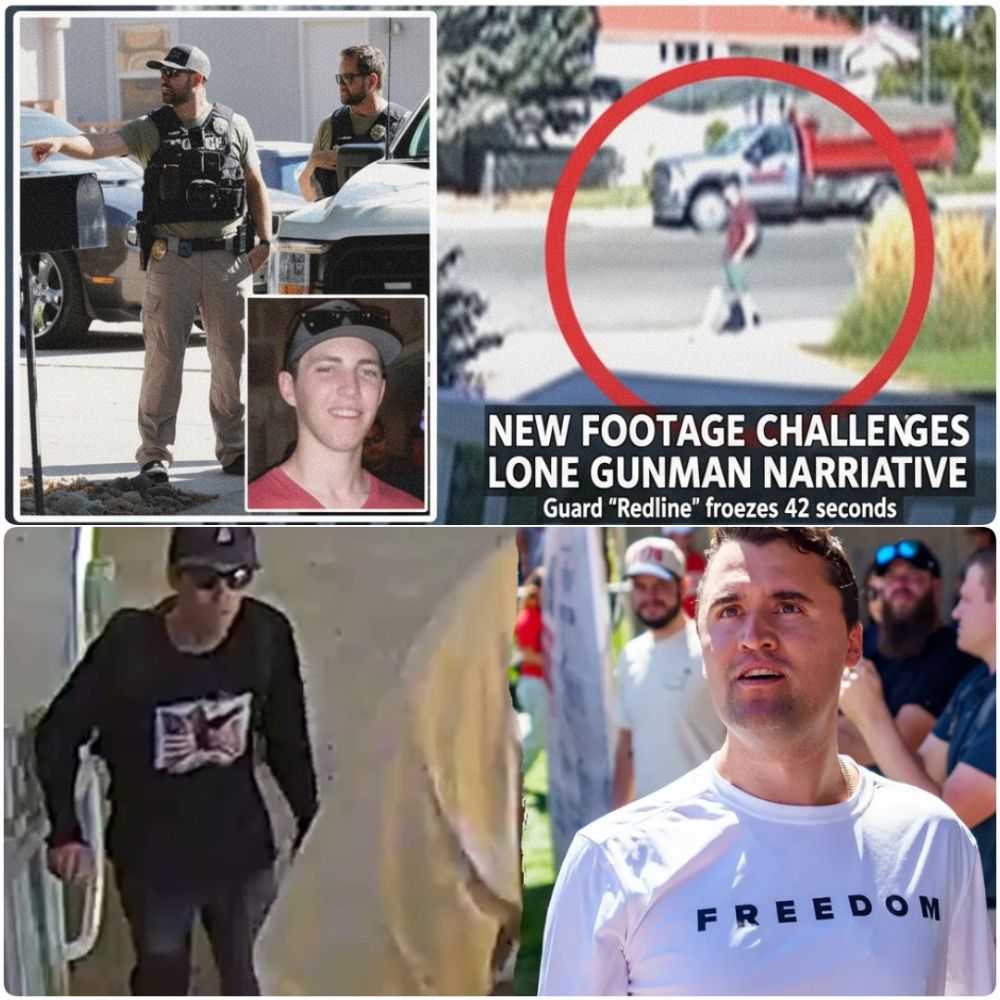New Charlie Kirk Shooting Footage Sparks Outrage — Disturbing Questions Emerge About His Security Team’s Role

The narrative surrounding the tragic shooting of conservative commentator Charlie Kirk at Utah Valley University (UVU) has faced significant challenges following the emergence of new footage. Initially portrayed as the chaotic act of a lone gunman, Tyler Robinson, recent investigations suggest a far more complex and disturbing scenario. The footage, compiled and analyzed by independent investigators, raises serious questions about the actions—or lack thereof—of Kirk’s security team, suggesting that they may have been complicit in a calculated plot rather than simply overwhelmed by a sudden act of violence.
On September 10, 2025, Charlie Kirk was hosting a “prove me wrong” event at UVU, attended by approximately 3,000 supporters. Just minutes into the discussion, a gunshot rang out, striking Kirk in the neck and leading to his death shortly after. While the official story has maintained that Robinson acted alone, the newly surfaced video footage presents a narrative filled with unsettling coincidences and apparent coordination among Kirk’s security personnel.
The newly released video captures the actions of Kirk’s security team, revealing a series of synchronized movements that suggest pre-planned communication rather than a spontaneous response to an emergency. Notably, two security members, one of whom was Kirk’s lead bodyguard, are seen checking their watches simultaneously. This coordinated action raises questions about whether they were anticipating the incident rather than reacting to it.
Further analysis of the footage shows one guard subtly passing a signal to the lead bodyguard, who then responds with a gesture directed at an unseen individual. Such covert communication during a time of crisis implies a level of foreknowledge that contradicts the narrative of a sudden attack.
Compounding these suspicious signals is a shocking lack of urgency displayed by the security team. Guards stationed in the eastern corridor abandoned their posts a full eleven minutes before the first alert was sounded. Additionally, one officer tasked with monitoring the crowd was seen repeatedly distracted by his phone, while another guard removed his earpiece, effectively disconnecting from critical communication channels during a crucial moment. These behaviors suggest not just negligence, but possibly an intentional stand-down order.
The technological failures that day further complicate the narrative. Despite the event being covered by multiple high-definition cameras, the official footage released was of poor quality. Alarmingly, two cameras that could have captured the shooter’s actions were inexplicably offline, one listed as “under maintenance” and the other transmitting only static. Both cameras were connected to the same security console, operated by a guard known as “Redline,” who has since become a central figure in the investigation.
After the incident, Redline claimed that his body cam footage suffered a “battery failure,” a claim echoed by two other team members. This pattern of missing evidence raises serious concerns about the integrity of the security team’s actions.
The security firm employing Kirk’s team, West Shield Tactical, has a history of operating in the shadows. When federal agents requested employee records for the event, the firm delayed the handover for five days. By the time the list was provided, critical records had been altered. Radio logs from the event did not match the surveillance footage, and audio files from the command channel were missing crucial minutes of communication.
Investigators found that time logs had been manually edited, with the digital trail leading back to Redline. This raises the question: why would someone alter records that could potentially exonerate them? The situation is further complicated by a leaked audio file in which a voice ominously states, “I was told to stand down,” a clip dismissed by major media outlets as potentially AI-generated, yet which has fueled public skepticism.
Perhaps the most damning evidence of a premeditated plan was discovered on a backup drive mislabeled as a “maintenance check.” Investigators found a folder titled “Crowd Control Contingency,” which outlined a crisis response plan that included a detailed escape route for the gunman—one that perfectly matched the path taken during the shooting. The file’s timestamp indicated it was created hours before the event began, raising serious questions about how such a contingency could have been anticipated.
The investigation into Charlie Kirk’s death has evolved from a straightforward account of a lone gunman into a complex web of potential complicity and deception. Each new piece of evidence strips away layers of the official narrative, suggesting that this was not a random act of violence but rather a meticulously orchestrated event. Tyler Robinson may have been positioned as a convenient scapegoat, while the real orchestrators—those who signaled, edited logs, and potentially ordered a stand-down—remain shrouded in mystery.
As the investigation continues to unfold, the chilling implications of this evidence leave many questioning the integrity of those tasked with protecting public figures and the truth behind the tragic events that unfolded that day at Utah Valley University.